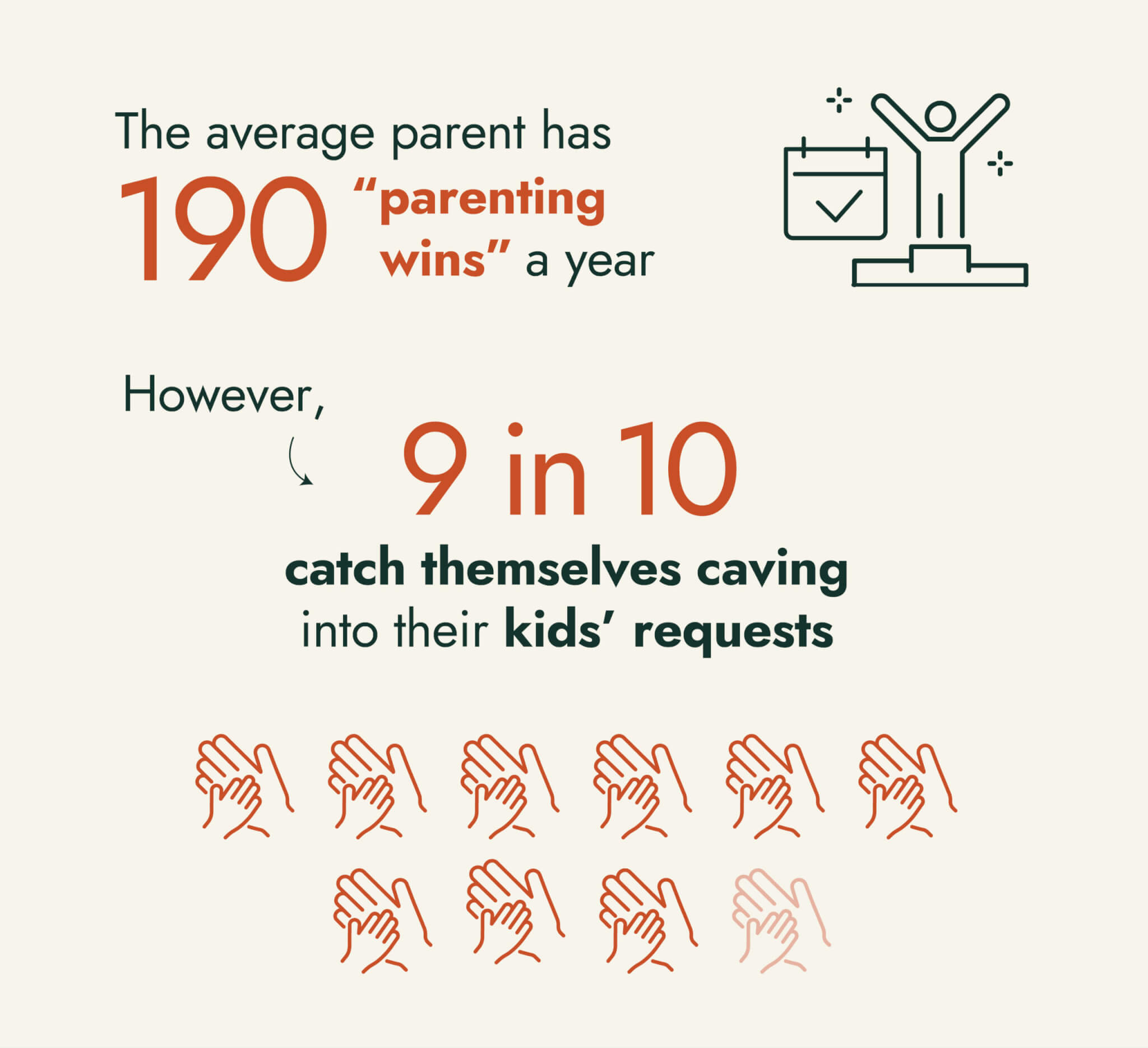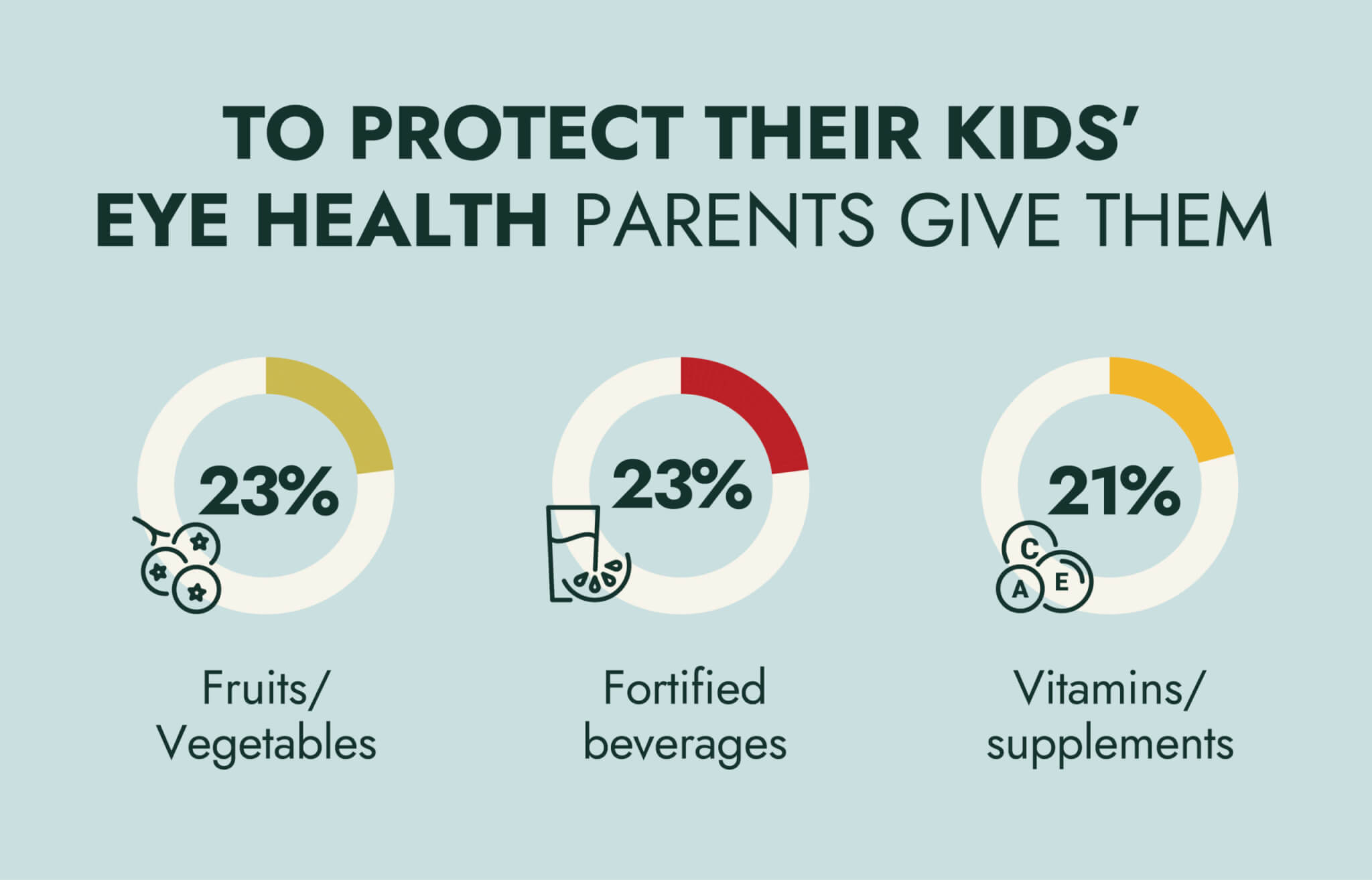NEW YORK — The average parent has a whopping 190 “parenting wins” every single year. Unfortunately, they’re sporting a losing record as they also have 218 “cave-ins” each year, new research reveals.
Parents’ top three “wins” are when their kid takes care of their own hygiene (16%), gets dressed in time for school (15%), and eats fruits and vegetables (14%). The top three “cave-ins” include letting their children eat the foods and snacks they want (21%), letting them have dessert before dinner (18%), and giving them a device to play with during mealtime (17%).
This is according to a survey of 2,000 parents with school-age kids that looks at how parents celebrate small successes, especially with eating healthy foods and using digital devices, with their youngsters.
To get children to eat healthily, parents set up a reward system (17%). This includes adding dressing, sauce, dip, whipped cream, or ice cream to their kid’s food (14%) and using utensils or dinnerware with characters (11%).

Conducted by OnePoll and commissioned by OmniActive Health Technologies for its “Lutein for Every Age” initiative, an education program focused on children’s eye health and the importance of incorporating key nutrients like lutein and zeaxanthin into diets, results also find some parents chose the stealthy route. That means hiding veggies in other dishes their kids enjoy.
Mac n’ cheese and cupcakes tie for the easiest food to sneak vegetables into (16% each), followed by muffins (14%) and pureed soups (10%).
At the same time, nine in 10 catch themselves caving into their kids’ requests. Most parents cave after only three asks. Ironically, 61 percent say it’s “easy” to say no to their child’s request.
As it relates to vision check-ups, nearly one in five parents (17%) say their kid’s vision has gone unchecked for three or more years. The American Optometric Association (AOA) recommends eye exams for asymptomatic children once between six to 12 months of age, and at least once between ages three and five. From there, kids should go to the eye doctor before first grade, and annually thereafter.
Interestingly, though, according to the data, six in 10 parents regularly worry about their child’s eye health, more than other aspects of their well-being, but are unfamiliar with ways they can support it.

In fact, only 21 percent give them vitamins and supplements to protect their vision, and 23 percent give them fruits and vegetables that contain vitamins or minerals for eye health. The top foods and beverages that parents serve their kids to support eye function are milk, apples, and salmon.
Drilling down into more food specifics, while carrots rank in the top spot in fruits or vegetables that parents think support eye health (15%), according to the American Academy of Ophthalmology (AAO), dark leafy greens such as kale are better. This is because of their high concentration of lutein and zeaxanthin. In the survey, kale ranks last among foods parents think to help support vision, suggesting knowledge gaps in nutritional needs for eye health.
“This survey shows that many adults don’t know what foods or beverages support their kids’ eye health, yet it’s a major health concern of theirs,” says Nutritional Advisor for OmniActive’s Lutein for Every Age initiative Keri Glassman MS, RD, CDN, in a statement. “Kale, along with spinach, pumpkins, sweet potatoes, and egg yolk, for example, have lutein and zeaxanthin, two major carotenoids that help protect our eyes and that naturally occur in the eye’s macula and brain. Since kids generally don’t eat a lot of these foods, look for fortified beverages and supplements with lutein and/or zeaxanthin to help maintain their eye health alongside encouraging them to incorporate these foods into their diet.”
Also, the survey found that three in four (75%) parents try to reduce their kid’s screen time in favor of outdoor time at least once a week. The average child spends four hours a day using digital devices. This equates to over 1,500 hours a year — and that’s only the screen time parents know.
Only 13 percent of parents give their children blue light glasses to use when they’re on their devices.
“Taking care of our eyes starts from the inside, like eating nutrient-dense foods, and works best when adding extra protection on the outside, such as wearing sunglasses,” says Vision Advisor for OmniActive’s Lutein for Every Age initiative Dr. Joseph Allen, OD, FAAO, Dipl ABO. “With the amount of time kids spend on digital devices, it’s important for them to take consistent breaks so their eyes can recover from digital fatigue. I recommend setting time limits on devices and getting outside as much as possible. In fact, research shows that spending around 13 hours a week outside is associated with a decrease in myopia or nearsightedness.”
Survey methodology:
This random double-opt-in survey of 2,000 parents with school-age kids (ages 5–18) was commissioned by OmniActive Health Technologies between Aug. 25 and Aug. 29, 2023. It was conducted by market research company OnePoll, whose team members are members of the Market Research Society and have corporate membership to the American Association for Public Opinion Research (AAPOR) and the European Society for Opinion and Marketing Research (ESOMAR).

